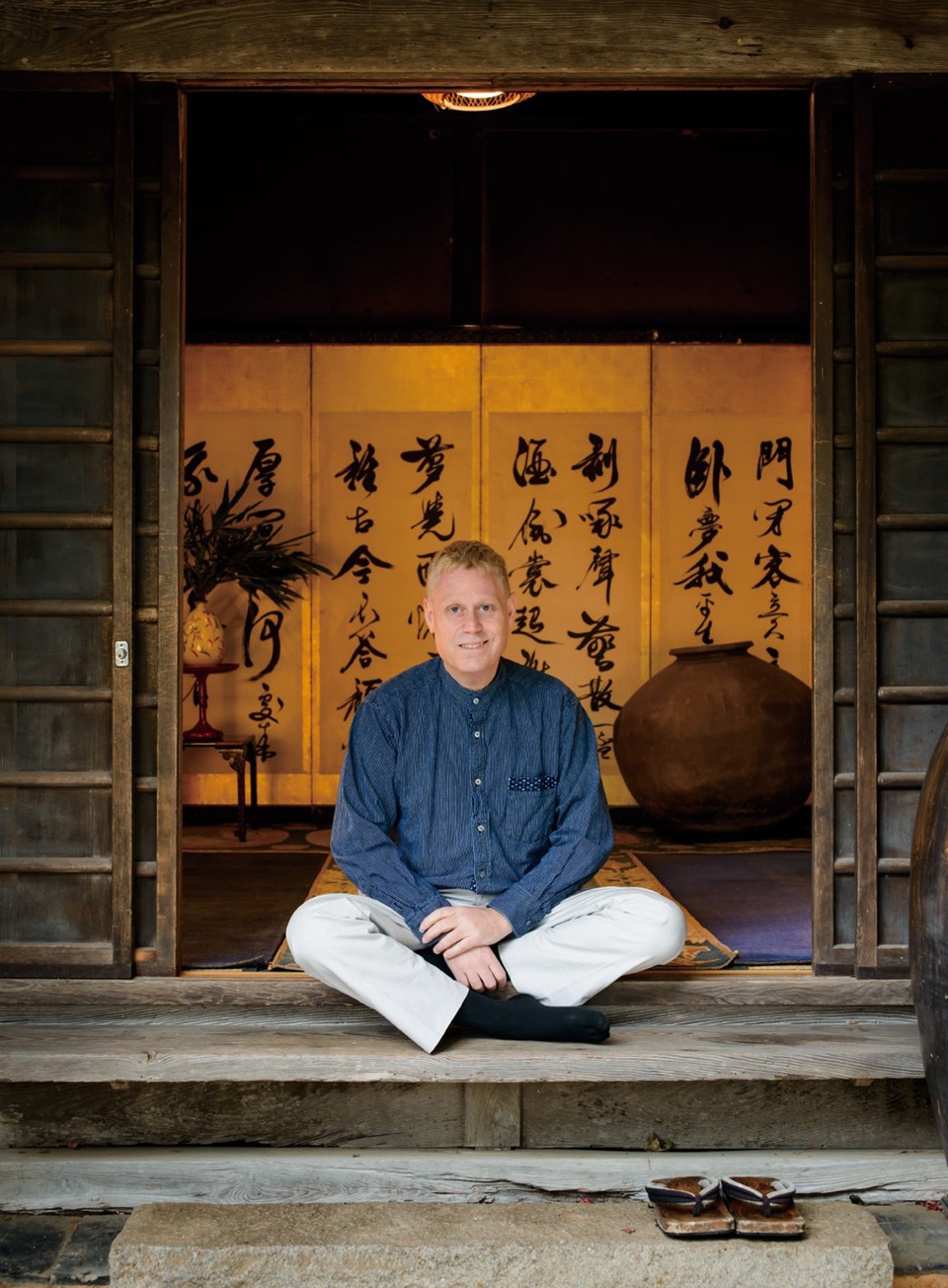Restoring Japan’s Cultural Heritage
Alex Kerr
Mr. Alex Kerr, a leading figure in the architectural restoration of
Japanese historical houses, at his home in Kameoka, Kyoto.
Mr. Alex Kerr is celebrating his fiftieth year in Japan. He arrived in 1964 just in time for the first Tokyo Olympics. He attended an international school in Yokohama for two years and fell in love with Japan. After studying at Yale and Oxford, he studied antique collecting with David Kidd and managed the Program for Traditional Arts at Omoto in Kameoka, Kyoto, from 1977 to 1997. In the 1980s he became interested in the preservation of Japan’s cultural heritage and wrote several books on it. Mr. Kerr is currently one of the leading figures in the field of cultural preservation in Japan.
In the summer of 1971, Mr. Kerr discovered the hidden Iya Valley in Tokushima Prefecture, Shikoku. Discovering the beauty of the old thatched houses (kominka) that he discovered there was an experience that changed his life. In 1973 he purchased a 300-yearold house that he named Chiiori (Cottage of the Flute), and over time the restoration of old Japanese houses came to be one of his main activities. In 2004 Mr. Kerr began restoring old Kyoto townhouses (machiya). There are now 150 such restored houses in Kyoto, and many Japanese people enjoy staying at these traditional homes.
With the increased promotion of tourism in Japan, there is rising demand for the restoration of Japan’s cultural heritage. Mr. Kerr is currently directing many restoration projects, including Iya Valley, Totsukawa (a remote village in Nara Prefecture), Ojika (an island off the coast of Nagasaki Prefecture), and Hida-Takayama (a historic town in Gifu Prefecture). He finally restored his own beloved house, Chiiori, two years ago.
Regarding his interest in Japanese culture, Mr. Kerr said, “I developed a great love of the Japanese performing arts, such as Kabuki and Japanese dance (nihon buyo) and attended countless performances. But for me two of the great joys of Japanese culture are the architecture and calligraphy. I had been learning Japanese calligraphy as a child, so when I first came to Japan it was such a thrill to discover Chinese characters everywhere. Calligraphy became a great passion of mine that I have kept up to this day. I even set up a mounting studio in Thailand and trained the mounters in Japanese techniques.
Mr. Kerr continued, “My other great joy is Japanese architecture. Japan was at the end of the Silk Road and incorporates elements from many countries in its architecture, including those of Southeast Asia, China, and Korea. The Japanese assimilated these elements and developed their own distinctive architectural style. In Japan there is a great of love of raw materials in their natural state. In architecture, you see this in the use of plain white paper, clay and bamboo, unpainted wood, rough-hewn stone, and so forth. In the Japanese traditional home, the raw materials are left intact so that one encounters paper, wood, and tatami that are unadorned. One is always stimulated to think about the materials themselves, and this also applies to the contemporary work of such architects as Tadao Ando, who are clearly steeped in this tradition. Another feature of Japanese architecture is that the rooms tend to be largely empty, with little or no furniture placed in the interior spaces. You could call Japanese interiors a culture of the empty space.”
“Developing from ‘empty space,’ Japanese architectural aesthetics created “variable space” or ma, the triumph of Japanese architecture. The walls are made of sliding doors that can be opened or shut to create and re-create marvelous fully open spaces or closed-off spaces, depending on the occasion. Rooms can be made larger or smaller; windows slide not only left and right, but up and down. At each shift of a door or window, vistas appear or disappear. I believe that one of the reasons for the great success of architects such as Tadao Ando and Kuma Kengo comes from their instinctive understanding of ma, an approach to the use of space that was developed by the Japanese and that deeply impacted their sense of beauty.”
He concluded, “Japan is a country full of treasures from the past, and their preservation is essential as they are an extremely important part of our human heritage.
































































































































